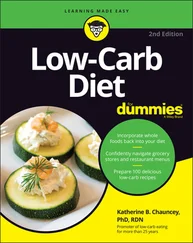1 ...7 8 9 11 12 13 ...18 Though a number of studies over the years have convincingly implicated salt as a bad guy when it comes to hypertension, the DASH researchers took on the challenge of directly comparing the impact of three different levels of sodium intake when added to a healthy, blood pressure–friendly DASH diet versus a less healthy, more typical control diet. Enter the DASH sodium study.
Participants included 412 adults with blood pressures higher than 120/80. More than half were women, more than half were black, and 40 percent had hypertension. Most were overweight.
The study included both the higher-fat, control, Western diet and the healthier DASH diet, and it tested three different levels of sodium intake: 3,450 milligrams, 2,300 milligrams, and 1,150 milligrams. Everyone started out on the high-sodium control diet for the first two weeks, and each was then randomly assigned to one of the two diets at one of the three sodium levels. After 30 days, researchers changed the sodium dose such that each individual was tested at the low, intermediate, and high levels of sodium. As in the original DASH study, the researchers prepared all the participants’ food and kept their calories constant.
Not surprisingly, the lower the salt intake, the better the blood pressure. The impact of sodium was greater with the less-healthy control diet than it was in the DASH diet, but the DASH group had lower blood pressure overall. Cutting sodium was especially effective in people who had hypertension to begin with, indicating they were more sensitive to salt’s effects.
THE CASE FOR SALT REDUCTION
Although it’s true that a few studies haven’t confirmed a link between sodium and high blood pressure, the overwhelming majority of research conducted over the past 50 years (analyzing more than 250,000 individuals, we might add) has established a strong, stepwise connection between salt intake and high blood pressure.
If stodgy scientific research is hard to make heads or tails of, consider this: In those dwindling societies that exist outside of the grasp of modern life, free of modern grocery stores and fast food, hypertension rarely happens, even in old age. This phenomenon has many reasons, of course, but one important contributor appears to be the low-salt, high-potassium diet of these literally down-to-earth cultures.
An analysis by the World Health Organization estimates that by simply cutting average salt consumption around the globe by 15 percent, more than 8.5 million lives would be saved over the next 10 years. That’s a hard statistic to argue with.
Although this is a goal that shouldn’t be difficult to achieve, the average American diet includes about 3,400 milligrams of salt daily. Cutting this amount by 15 percent would get down to about 2,900 milligrams daily, which is still substantially higher than the recommendations by the Centers for Disease Control and Prevention (CDC). For optimum health, the CDC recommends a maximum daily sodium intake of 2,300 milligrams for most people age 50 and under. For those over 50, African Americans of any age, and people with hypertension, diabetes, or congestive heart failure, the recommended limit is 1,500 milligrams. The CDC also advises obese individuals to adopt a lower-salt diet because obesity tends to increase salt sensitivity and fluid retention. Overall, though, far fewer than 10 percent of Americans stay within these guidelines.
Remember: If your blood pressure tends to run low, or if it drops when you stand up, then a low-sodium diet may not be right for you. For some people, this may be a sign of dehydration or anemia. If you have low blood pressure or symptoms of dizziness, be sure to check with your doctor before making a change.
When pitted against the high-sodium control diet, the low-sodium DASH diet dropped systolic blood pressure by 11.5 points in people with hypertension. The effect was even greater (12.6 points) for black people. Women benefited more than men. Even those without hypertension saw their blood pressures fall by about 7 points. Diastolic blood pressure dropped as well, but the effect wasn’t as dramatic, averaging about a 4.5-point difference between the high-sodium control diet and the low-sodium DASH group.
 Because most people consistently eat too much salt, you may worry that a sudden change in sodium intake could cause side effects, even if, in the long run, it’s better for you. To the contrary: There were fewer headaches and no differences in any other symptoms reported.
Because most people consistently eat too much salt, you may worry that a sudden change in sodium intake could cause side effects, even if, in the long run, it’s better for you. To the contrary: There were fewer headaches and no differences in any other symptoms reported.
Omni-Heart: A Variation on the DASH Theme
In 2003, a group of researchers from Johns Hopkins University and Harvard University decided to test the theory that by increasing high-quality protein, and slightly decreasing carbohydrates, the DASH diet could be made even better. Funded by the National Institutes of Health, the Optimal Macronutrient Intake Trial to Prevent Heart Disease — also known as Omni-Heart — included 164 individuals similar to those enrolled in DASH. The average age was 54, 45 percent were women, and 55 percent were black. Most were overweight or obese. Everyone’s blood pressure was at least 120/80 at baseline.
Three different diets were tested:
The carbohydrate diet was very similar to DASH, except that it was a little heavier in carbs and a bit lighter in protein. (Carbohydrates made up more than 55 percent of the calories in the original DASH diet; protein made up 18 percent.)
The protein diet had 25 percent of calories coming from protein, about half of which were of plant origin (think soy, beans, and nuts). Carbs were cut to 48 percent, as compared to 58 percent in the DASH-like carb diet.
The unsaturated fat diet provided 37 percent of its calories from fat (compared with 27 percent in the other two options), more than half of which was monounsaturated (typical sources include olive oil, canola oil, peanut oil, avocado oil, avocados, and almonds). Protein content was the same as in the DASH-type diet, while carbs were kept to 48 percent.
To put it more simply, the Omni-Heart researchers played with just 10 percent of the DASH diet calories, boosting protein in the protein diet and bumping up monounsaturated fat in the unsaturated fat diet, both at the expense of carbohydrates. Omni-Heart wasn’t a low-sodium study. Everyone received the same amounts of sodium (a middle-of-the-road 2,300 milligrams) and similar amounts of blood pressure–friendly potassium, magnesium, and calcium. Omni-Heart wasn’t a weight loss diet, so calories were kept constant to maintain a stable body weight.
Much like in the original DASH study, Omni-Heart researchers prepared all the food for participants. Each person spent about six weeks on each of the three diets, with the sequence of the diets (carb versus protein versus mono-fat) randomly assigned.
Compared with baseline blood pressure readings, blood pressures improved on each of the three diets. However, both the diet higher in protein and the one with more monounsaturated fat had a significantly greater impact on blood pressure control for those people who already had high blood pressure. To be more precise, on the DASH-style diet, systolic blood pressure plunged by an impressive 13 points in people with hypertension. Nice! But both the higher protein and the higher monounsaturated fat diets surged ahead with a 16-point drop over baseline. Likewise, diastolic pressure fell by a respectable 6 points in the DASH-like diet but tumbled more than 8 points with the other two options. Lipid numbers (HDL, or “good” cholesterol; LDL, or “bad” cholesterol; and triglycerides) were also somewhat better on both of the alternative diets, although all three options improved LDL cholesterol readings compared to baseline.
Читать дальше

 Because most people consistently eat too much salt, you may worry that a sudden change in sodium intake could cause side effects, even if, in the long run, it’s better for you. To the contrary: There were fewer headaches and no differences in any other symptoms reported.
Because most people consistently eat too much salt, you may worry that a sudden change in sodium intake could cause side effects, even if, in the long run, it’s better for you. To the contrary: There were fewer headaches and no differences in any other symptoms reported.










